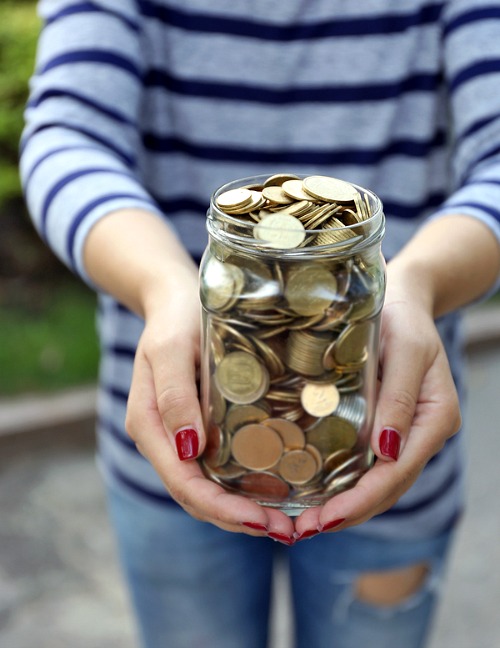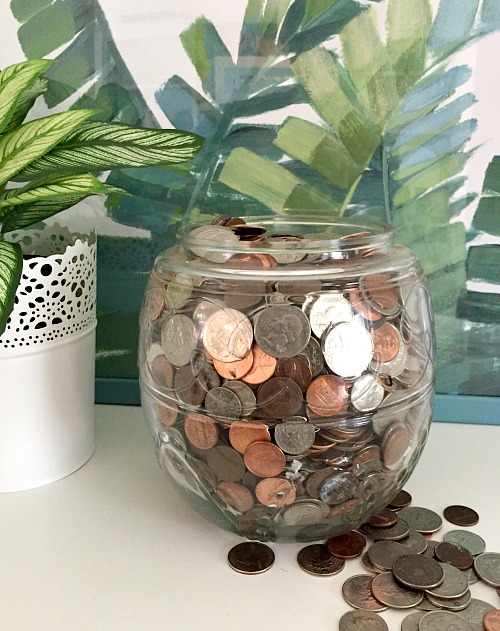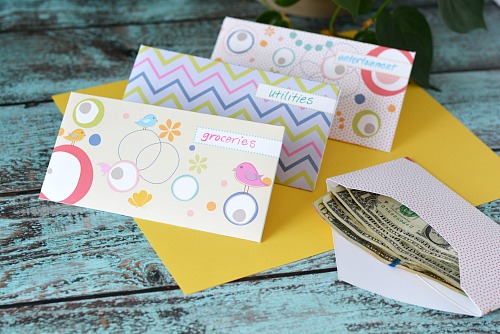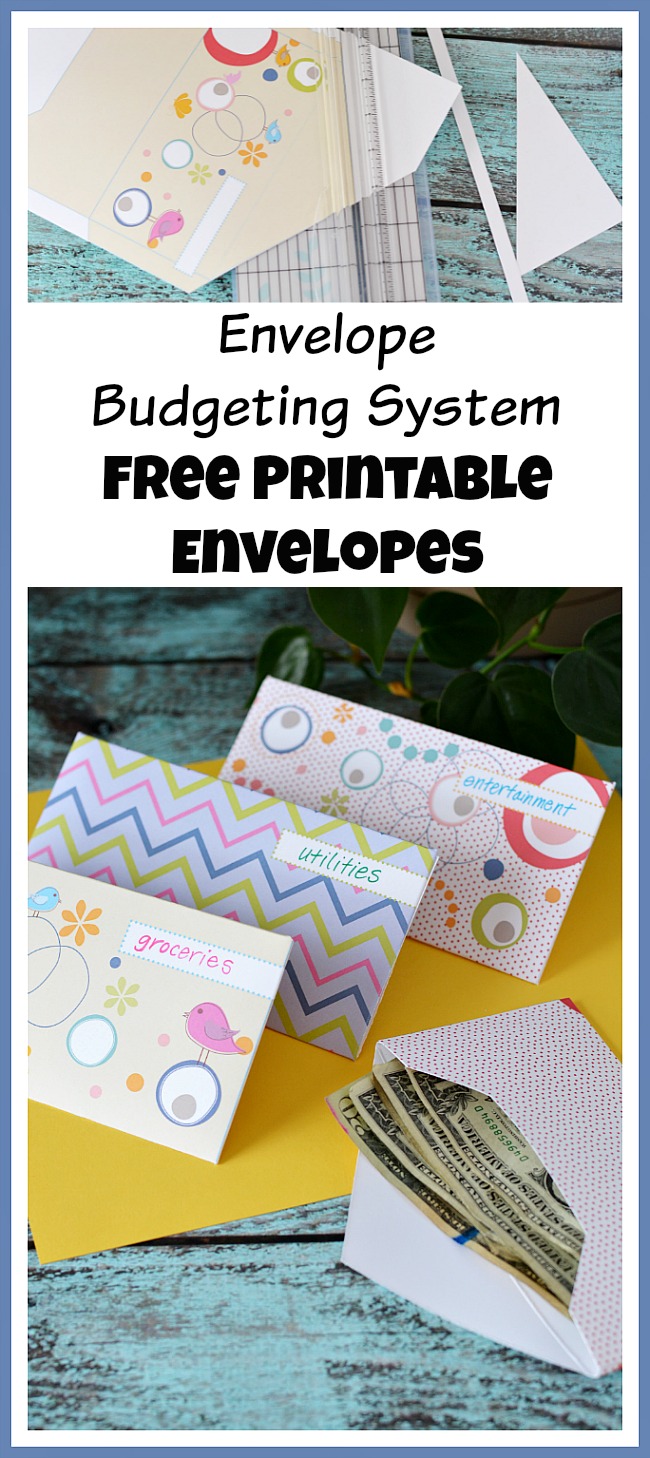How to Use a Coin jar to Save Egg Money.
Have you ever heard of the term “egg money”? Supposedly the term came from the fact that when farmer’s wives made money off their chickens’ eggs, they would put that money aside for fun things. So if they wanted to buy clothes or special fruits, they would use their “egg money.” “Crop money” was used to pay for serious things. Our family uses the same sort of idea, but with a coin jar (in the shape of an egg)! Here is Why You Need a Coin Jar- Saving Egg Money!

Disclosure: This post may contain affiliate links to Amazon and/or Etsy, which means that I may earn a small commission from some of the links in this post. Please see our Disclosure Page for more information.
Honestly, saving money in any form is a good thing to do. But using a coin jar is so easy, and the savings, though small, add up fast!
Why You Need a Coin Jar- Saving Egg Money
The Benefits of a Coin Jar

So why do you need a coin jar? The short answer is that it helps you save money. But how it does this is actually quite clever. By simply having a place to keep extra change, you start saving that change. Without a coin jar at home, you’re likely to just let coins accumulate and get lost in your purse, coat pockets, etc. Or maybe you’ll tell the cashier to keep the change.
But if you have a coin jar at home, you’ll happily take your change and promptly deposit it in the jar once you get home. So now, instead of knowing that you have some extra change somewhere (or not even taking your change), you’ll know that all your excess change is in the coin jar. And if you use cash regularly, that jar will fill up fast! It’s so motivating to see all those coins start to fill up the jar!
And you may be surprised how much “egg money” you have when the jar is filled up. Our glass egg jar holds about $200 worth of coins on average!
How to Save Egg Money- What to Use as a Coin Jar

We like to save our egg money as coins in a glass egg shaped jar. So it’s literally “egg money”! But really, any sort of container would work. You could even use a Mason jar with a coin slot, glass jug, traditional piggy bank, or electronic counting jar! There are even cute decorative ones in the shape of an owl, cat, and dog! (Note: I don’t remember exactly where I got the egg jar- it was ages ago – but I have seen some similar kinds of jars listed as egg shaped apothecary jars on Ebay. You might also want to search for glass Easter decor.)
If you hardly ever have actual physical money in hand (maybe you never pay with cash, so don’t have change) the process of saving egg money is a bit trickier. If your bank has a program that rounds up your purchases (like turning a $4.89 purchase into a $5 purchase) and saves the excess in a savings account, that’d be the easiest digital coin jar. Or you could manually round up your purchases weekly and transfer that money to your savings account. Since finances are so digital and online-based these days, the way you handle your egg money won’t be exactly the same as how a farmer woman handled hers. But the idea is still the same!

But there are several reasons why using cash is good for your budget (there’s even a form of budgeting called the cash envelope system). So I’d recommend incorporating at least a little cash usage into your finances, and saving the change from that in your coin jar!
How to Cash Out Your Coin Jar

So now that you have a decently filled coin jar, what do you with it? No cashier would be happy to see you walk up lugging your jar of coins to pay for your purchase! So you need to turn those coins into cash. Most big banks won’t count your coins and roll them up for you anymore, so if you want your bank to turn your coins into cash, you’ll have to roll the coins yourself. Luckily many banks are happy to give the coin wrappers away for free, or you can buy them at the store.
But what we always do (and what I think is easiest) is we use a Coinstar kiosk. Yes, the kiosk does keep some of your money as a counting/processing fee (currently 11.9%). But it’s so easy and convenient to use (and it’d take so long to roll all the coins manually) that we don’t mind the fee. And if you wanted to, you can bypass the fee by cashing out for an Amazon gift card instead.
What to Do with Your Coin Jar Money

Alright, now you’ve cashed out your coin jar’s egg money. But what is the best way to use it? Technically, egg money is fun money. But you may have gotten more cash back than you would feel comfortable blowing on unnecessary purchases, and that’s okay! A frugal way to use your coin jar savings would be to spend the money on groceries or homegoods. This is easy, as the kiosks tend to be inside Kroger and Walmart stores. We’ve gotten “free” groceries several times using this method!
If you’d rather turn your coin jar savings into more usable digital savings, you can take the cash to your bank or ATM to deposit. And remember that getting an Amazon gift card is also an option at Coinstar kiosks. Since Amazon has pretty much everything these days (including food), it could be a smart decision to get the fee-free Amazon gift card and just keep the money in your account until your next purchase.
So now that you know how a coin jar helps you save money, it’s time to start saving!
What would you like to do with your egg money?

You might also be interested in: Envelope Budgeting System Free Printable Envelopes

Great post! I have a coffee can in my laundry room that I refer to as my “laundry tip jar.” Same concept, except I put the money that I find in the washing machine in it. Although, I think you’ve just inspired me to put my change at the end of the day into it, too. Hubby and I are also envelope budgeters, so there’s always change in my wallet at the end of the day. I’m curious how much I can save in a few months, without really even trying!